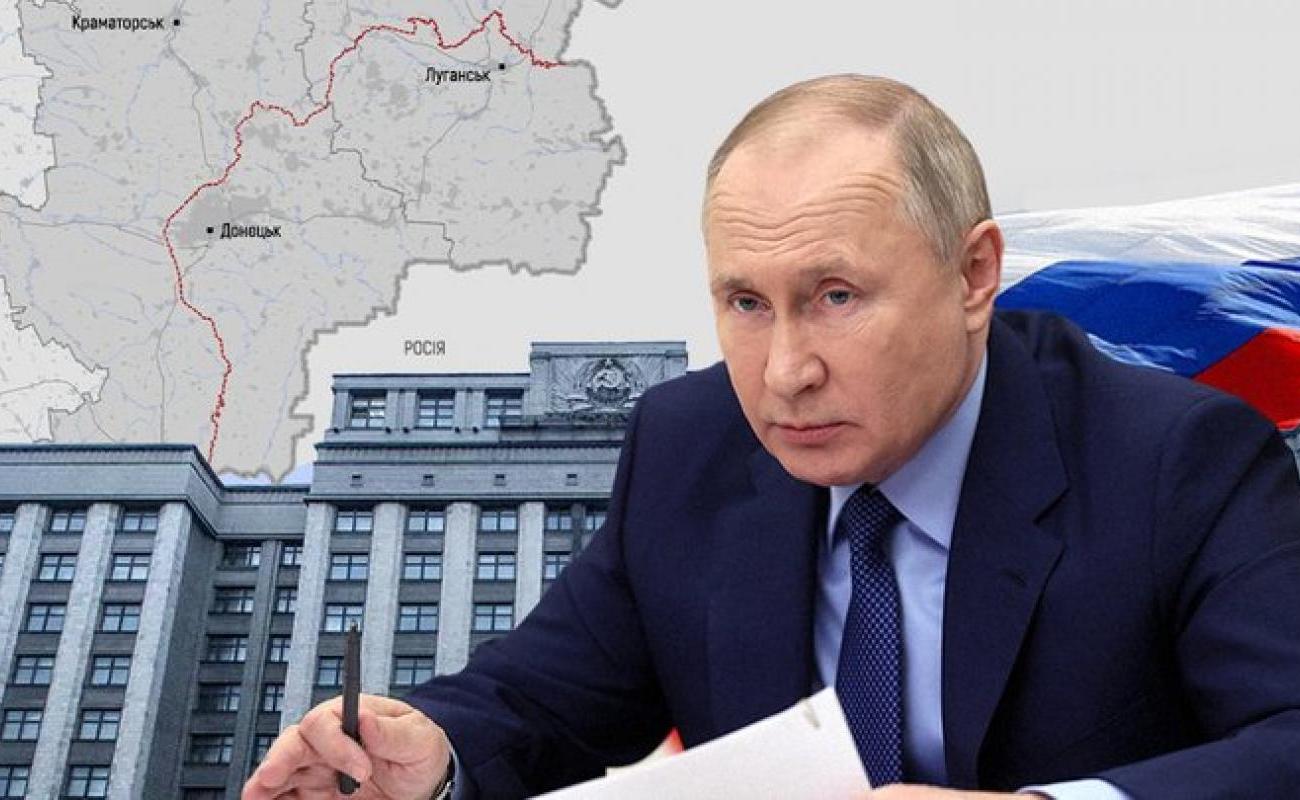Kremlin liquidates "LDNR". What does that mean?

Russian President Vladimir Putin appointed the head of the so-called "DNR government" as the new governor of the Omsk region of the Russian Federation and announced a meeting with the leader of this group - Denis Pushilin. And the head of the occupation administration of Luhansk, Leonid Pasičnik, issues a "decree" on the abolition and dissolution of the government of the so-called "LNR".
March 29, 2023 was the last day of the existence of the "LNR" in the sense that Russia invests in this territorial entity: the occupying authorities of Lugansk liquidated it with their "decree". This was done in accordance with the Russian law of October 4, 2022, which declared the "acceptance" of the "republic" into the Russian Federation.
Given that Russia has a similar law regarding the so-called "DPR", it can be predicted that it will also be liquidated in the near future.
What will happen to the "republics"?
After Putin announced the annexation of the occupied territories of Ukraine, the Russian Parliament adopted federal laws according to which the so-called "Donetsk People's Republic" and "Luhansk People's Republic" are part of the Russian Federation as "Donetsk People's Republic" and "Lugansk People's Republic".
Since the Kremlin now considers the occupied territories of Ukraine as its own, there is no need for the system of governance that currently exists there. Now the authorities of the so-called "republics" must be liquidated and replaced by the federal, that is, the Russian authorities. That's what it says in the "decree".
For the fall of 2023, the occupying authorities are already preparing to hold elections for governors and local legislative assemblies in the territories annexed by Russia. Probably, by then, they are planning to form unified authorities in Moscow typical of the entire Russian Federation.
What will happen to the security forces?
The Russian command even earlier decided to integrate the so-called army corps that operated in these territories into the armed forces of the Russian Federation. In addition, these formations began to be supplemented by those mobilized from Russia.
And the commander of the "Vostok" battalion, a former SBU officer, Oleksandr Khodakovski, announced that the unit under his command would become part of the Russian Guard.
It is obvious that the "Ministry of Internal Affairs" and the "MGB" of the "republic" will fall under the unification, whose functions will be performed by the Ministry of Internal Affairs, that is, the FSB of the Russian Federation. The issue of integrating their leadership into Russian structures remains.
Leaders-governors
After the announced annexation of the occupied territories of Ukraine, the Kremlin left the main collaborators who previously led them - Pushilin and Pasičnik - as acting governors of the "affiliated" regions. It is currently unknown whether Putin will appoint them as governors without appointing acting officials.
But considering the fact that the leaders of the "LDNR" groups became members of the ruling United Russia party in Russia and that they actively contributed to the elections in the occupied territories, at least they see themselves integrated into the already purely Russian administration.
Moreover, in modern Russia all governors are either members of the party or appointed by it. Maybe Putin and Pushilin will discuss these prospects at the announced meeting.
Also, it is not the first time that managers appointed to occupied territories in Russia are appointed to high positions in Russian regions. Back in 2019, the temporary leader of the "DNR" was appointed as the head of Kalmykia. But in Donbas they considered it "local".
But the latest appointments are more symbolic. In mid-March, Vladislav Kuznetsov, the deputy president of the "Government of the LNR" became the governor of the Russian Chukotka region, and at the end of the month, the head of the "Government of the DPR" Vitaly Hochenko headed the Omsk Region.
Both were sent from Moscow to the occupied territories and probably transferred in advance to positions in Russia before the liquidation of the so-called republic.
At the end of November 2022, the vice-governor Sergey Yeliseyev, who was briefly the head of the occupying "Government of the Kherson region", returned to the Kaliningrad region of Russia.
The end of the era of quasi-formations of the Kremlin in Donbass
From the point of view of the history of the "LDNR", the liquidation of the authorities and the "republics" themselves - a quasi-organization created by Russia and under its control - is historic. The aggressor is no longer hiding.
The management system that the Kremlin formed on the territory of the occupied part of Donbass in 2014 is disappearing. And in addition to this, the distribution of resources, the power block and even the propaganda system will probably be reformatted (perhaps local leaders will play a smaller role in this).
From the point of view of international law and Ukraine's assessment of events, this does not change anything. The territories and those occupied by Russia before February 24, 2022 and after, are not recognized as "republics" and will not be recognized as part of Russia. These are Ukrainian territories occupied by the Russian Federation. Before their merger, of course.
